
David Glasgow Farragut was a flag officer of the United States Navy during the American Civil War. He was the first rear admiral, vice admiral, and admiral in the United States Navy. He is remembered in U.S. Navy tradition for his bold order at the Battle of Mobile Bay, usually abbreviated to "Damn the torpedoes ... full speed ahead."

Samuel Francis Du Pont was a rear admiral in the United States Navy, and a member of the prominent Du Pont family. In the Mexican–American War, Du Pont captured San Diego, and was made commander of the California naval blockade. Through the 1850s, he promoted engineering studies at the United States Naval Academy, to enable more mobile and aggressive operations. In the American Civil War, he played a major role in making the Union blockade effective, but was controversially blamed for the failed attack on Charleston, South Carolina in April 1863.

James Hooker Strong was a rear admiral of the United States Navy, who served during the American Civil War.

Rear Admiral Lewis Ashfield Kimberly was an officer in the United States Navy during the American Civil War and the years following.
Edmund Ross Colhoun was a rear admiral of the United States Navy who served during the Mexican War and the American Civil War, in which he was commended for his participation in the bombardment and capture of Fort Fisher.

Hiram Paulding was a rear admiral in the United States Navy, who served from the War of 1812 until after the Civil War.

James Shedden Palmer was an officer in the United States Navy during the Civil War. He was later promoted to rear admiral.

USS Hartford, a sloop-of-war steamer, was the first ship of the United States Navy named for Hartford, the capital of Connecticut. Hartford served in several prominent campaigns in the American Civil War as the flagship of David G. Farragut, most notably the Battle of Mobile Bay in 1864. She survived until 1956, when she sank awaiting restoration at Norfolk, Virginia.
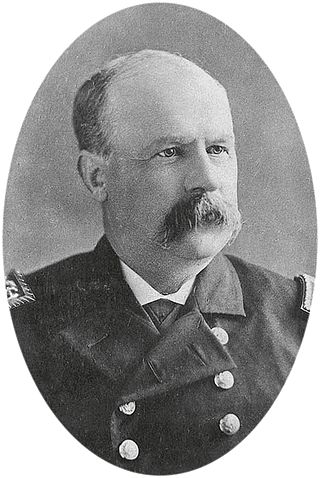
Commodore George Hamilton Perkins was an officer in the United States Navy during the American Civil War.

Commodore Garrett Jesse Pendergrast was an American naval officer who served in the United States Navy during the War of 1812 and as part of the Brazil Squadron and Home Squadron. He served in the Union Navy during the American Civil War. He commanded the USS Cumberland during the loss of the Gosport Navy Yard in Norfolk, Virginia to Confederate forces and captured 16 Confederate ships in the early stages of the Union blockade. He served as commander of the Philadelphia Navy Yard from October 1861 until his death in November 1862.
Samuel Dana Greene Sr. was an officer in the United States Navy during the American Civil War, mostly noted for his service aboard the USS Monitor during the Battle of Hampton Roads.
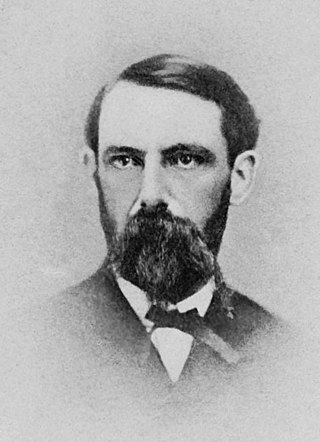
Rear Admiral Montgomery Sicard was an officer in the United States Navy during the American Civil War.
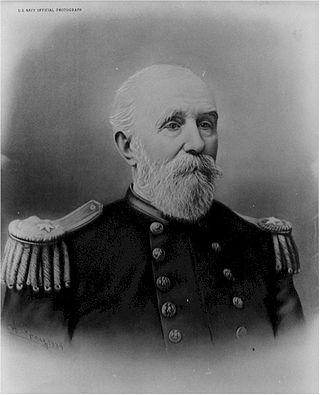
Thomas Stowell Phelps was an officer in the United States Navy. He served in the United States Navy from 1840 to 1884, attaining the rank of Captain in 1871 and Rear Admiral in 1884. He served in the Mediterranean, the Atlantic, and the Pacific, and commanded the sloop Juniata during the critical battle to capture Fort Fisher in January 1865.

William David Porter was a flag officer of the United States Navy. He was the son of Commodore David Porter (1780–1843) and brother of Admiral David Dixon Porter (1813–1891) as well as foster brother of Admiral David Farragut (1801–1870). His son, William David Porter, Jr. (1840-1902), served in the Confederate Navy.
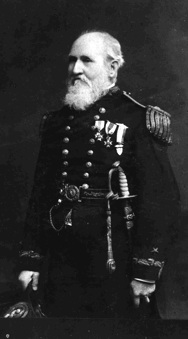
Thornton A. Jenkins was an officer in the United States Navy, who served during the Mexican–American War and the American Civil War. He later served as chief of the Bureau of Navigation and as president of the United States Naval Institute. Jenkins retired as a rear admiral.

Alexander Colden Rhind was a rear admiral in the United States Navy, who served during the Mexican–American War and American Civil War.

Rear Admiral John Mellen Brady Clitz was an officer in the United States Navy. During his long naval career, he fought in both the Mexican War and the American Civil War and rose to command of the Asiatic Squadron.

Captain Robert F. R. Lewis was an officer in the United States Navy. He participated in the Paraguay Expedition, fought in the Mexican War and American Civil War, and served briefly as commander of the Asiatic Squadron.
Rear Admiral Andrew Bryson was an officer in the United States Navy. He fought in the American Civil War and served as commander of the South Atlantic Squadron.
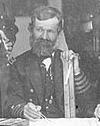
Rear Admiral George Henry Cooper was an officer in the United States Navy. During his long naval career, he served on the African Slave Trade Patrol, and fought in the Second Seminole War, the Mexican War, the American Civil War, and the Korean Expedition, and rose to command of the North Atlantic Squadron.




















